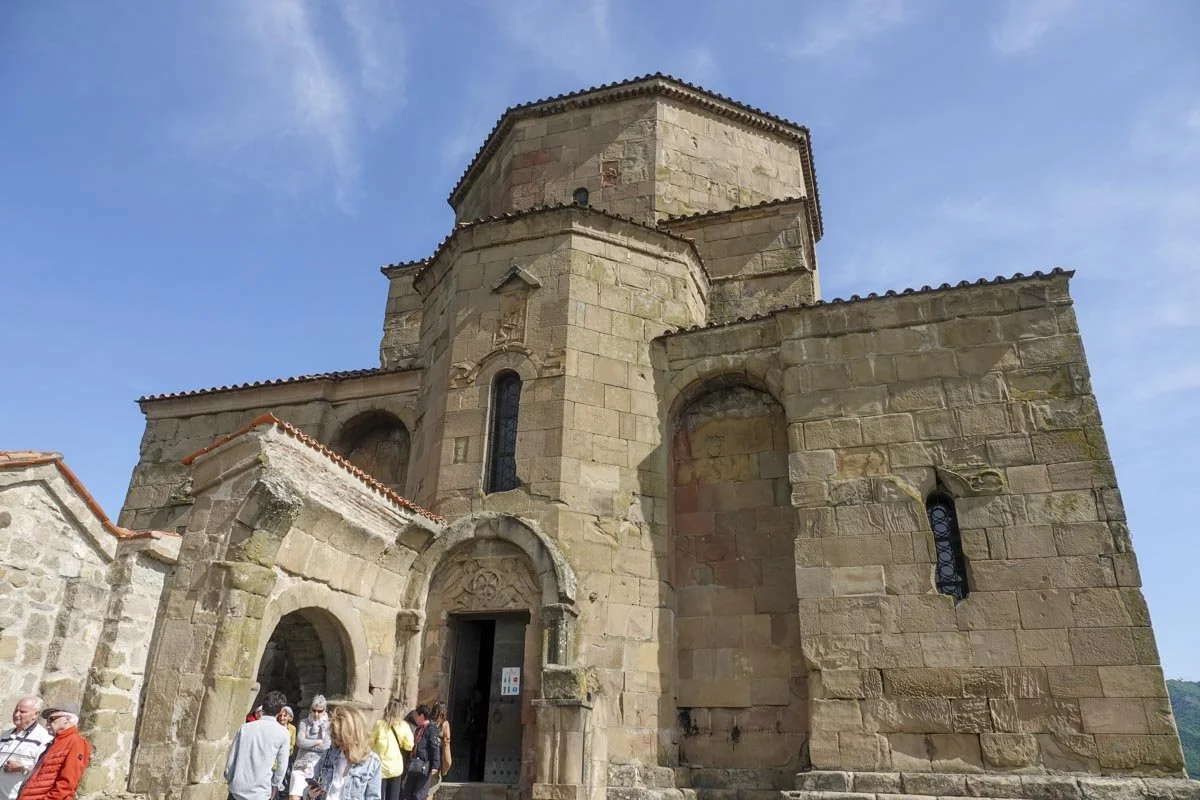Jvari Monastery
Moving on from Tbilisi, we made a stop at the Jvari Monastery. It's an early medieval Georgian church and a rare one in that it has survived to the present day almost unchanged. The church became the originator of its type, the Jvari type of church architecture, prevalent in Georgia and Armenia. It is one of the holiest sites in the Caucasus. The church was built between 590 and 650 AD. There is a lot of history and a lot of stories attached to this church but I won't go into all that.
The church is built on a rocky mountaintop at the confluence of the Kura (or Mtskheta) and Aragvi rivers. It overlooks the ancient capital of Mtskheta which was the capital of the Kingdom of Iberia from the 3rd century BC up to the founding of Tbilisi in the 5th century AD. They say that the old capital is Georgia's spiritual heart of the country.
It was nice to see an ancient church that hadn't been rebuilt over and over. On the other hand, the interior of the church was all under a huge reconstruction project so there wasn't much to see inside the church.
While I definitely liked the Jvari Monastery, I really liked the views that we got from the church. The first one is looking down at the ancient capital of Mtskheta and the confluence of the two rivers. Our guide said that this was where the two rivers readily mixed together. I looked down and saw where the two rivers joined each other but I didn't see any ready mixing going on. It's a beautiful area.
In the photo below, you can also notice the large cathedral in Mtskheta, which will be our next stop.
The second photo is just looking to the right of the first photo, further up another canyon area.
This monastery is now quite a tourist site, so it was very busy. For that reason, we wandered around the back side to enjoy a more quiet and peaceful time with the site.
As the importance of the Jvari complex increased over time, the complex was fortified in the late Middle Ages by a stone wall and gate, remnants of which still survive today. The Soviets preserved this as a national monument which is partly why it's in such good shape today. Since independence, Georgia has restored the building to active religious use.






